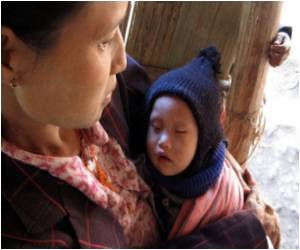As the problem of the chronically homeless mounts in the US, the public libraries in that country are slowly turning into de facto daytime shelters

The local shelters push them out onto the streets at six in the morning and, even when the weather is good, they are already lining up by nine, when the library opens, because they want to sit down and recover from the chilly dawn or use the restrooms.
There are at least 200,000 people across the nation living more or less permanently on the street, enough to fill a thousand public libraries every day.
Worse most of the ''chronically homeless'' are mentally ill, say activists.
The published data on how many homeless are considered mentally ill varies widely from 10% to 70%, depending on whether all the homeless, or just the chronically homeless, are included. And how does one categorize alcoholics and drug addicts is another question.
It's a chicken-or-egg world for the mentally-ill homeless. Are they on the street because they are immobilized by severe depression or is deep depression the consequence of being on the street?
Advertisement
Imagine the degradation of waiting an hour in the cold rain to get into a soup kitchen for a meal; the hassle of hunting endlessly for an unpoliced spot to sleep; the constant fear of being robbed or attacked by other street people; or the indignity of defecating in a vacant lot.
Advertisement
In such a backdrop the public libraries have come to play a significant role in the life of a mass of disoriented people. That in turn makes the librarians the guardians of the underdogs. So now calls are emanating to equip the librarians with adequate knowledge of handling emergency situations involving the danger-prone mentally ill among the vagrants.
The librarians have to take care of the homeless who troop in once the library opens and have to take care of them. If they pass out, other authorities have to be alerted. Many times librarians also act as counselors.
And when they interact closely with the homeless who might suffer from a variety of diseases, librarians themselves become vulnerable.
Chip Ward, who recently retired as the assistant director of the Salt Lake City Public Library System, notes, ”We offer our staff hepatitis vaccinations and free tuberculosis checks. We place sanitizing gels and latex gloves at every public desk. Who would guess that working in a library could be a hazardous occupation?”
There is hope, however. After decades of studies by various task forces, followed by experiments by local governments, a consensus has emerged that the most effective way to help chronically homeless people is to stabilize them in housing first and then offer treatment.
Social scientists and policy-makers have concluded, logically enough, that it is hard to ''get better'' while living in a stressful, demeaning, and unstable environment and easier to recover when one feels safe and secure.
The Salt Lake County, like some other local governments, has created a ten-year plan to end homelessness based on housing-first principles. The wheel of reform is moving slowly, however, and many people who need help now will suffer and die on the street before things can turn their way (if they ever actually do), says Chip Ward.
Source-Medindia





